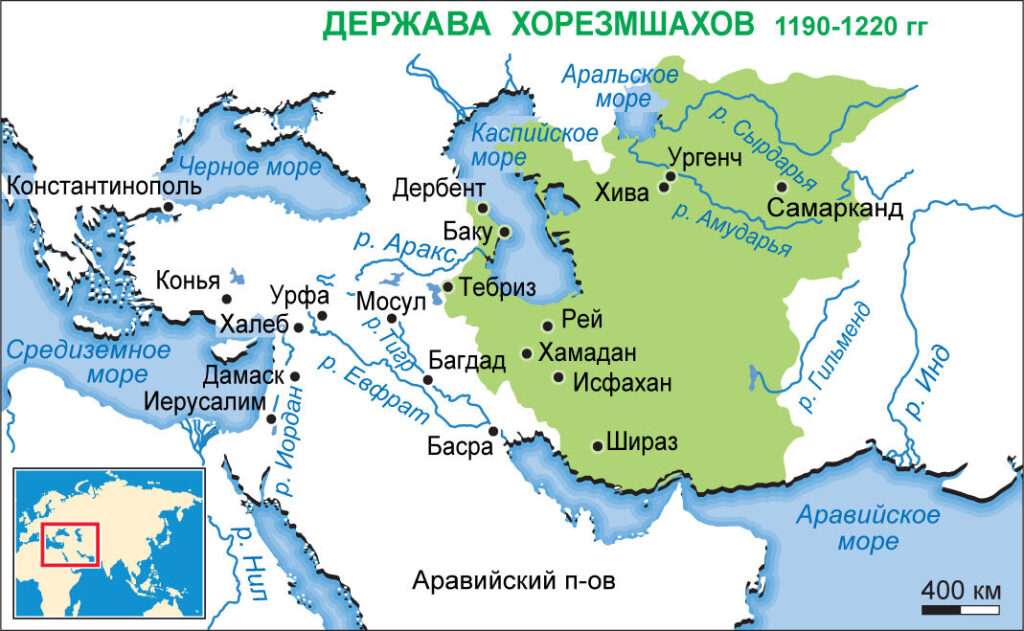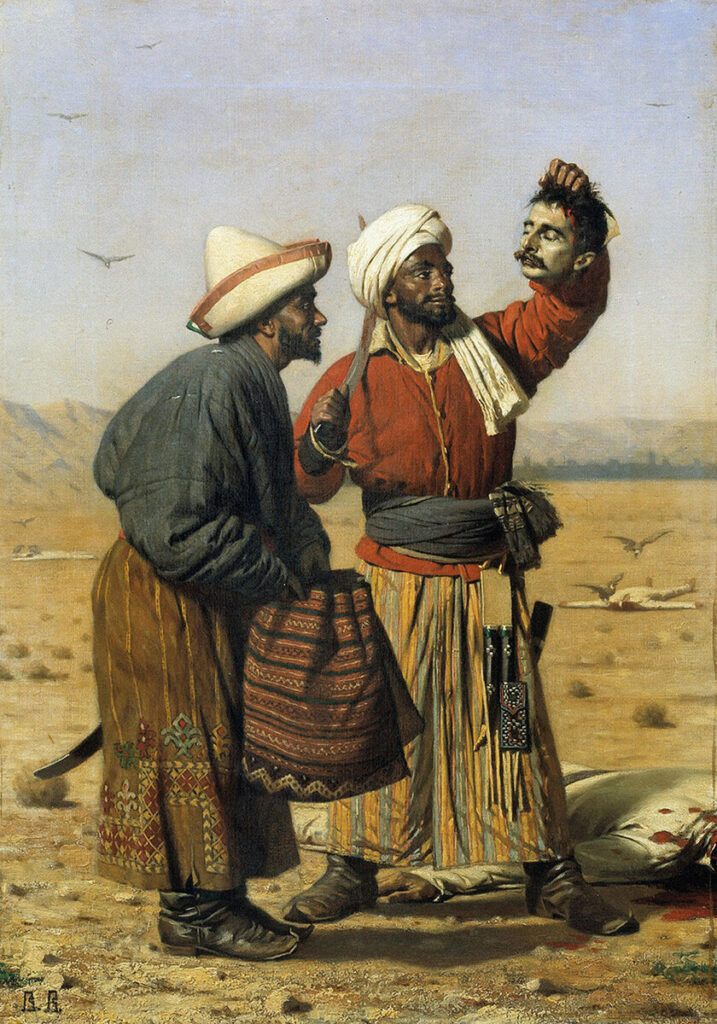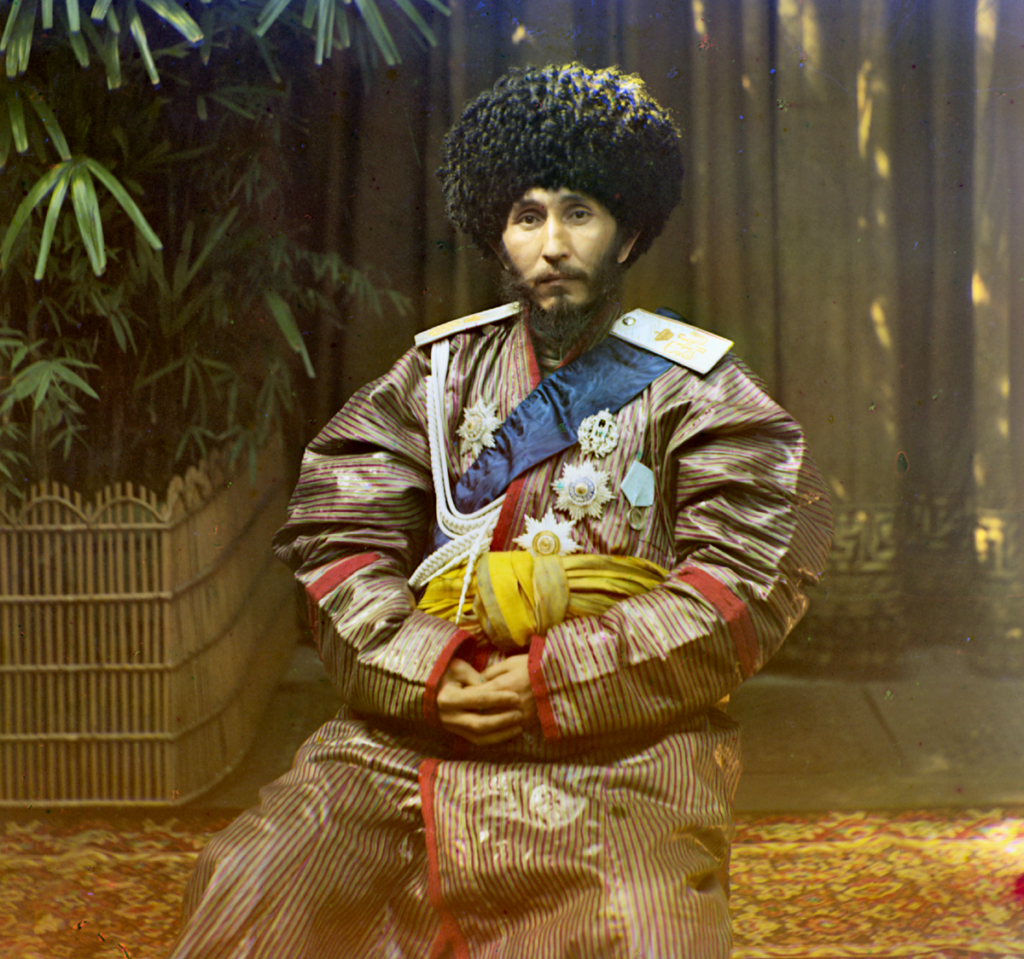We know very little about the Khanate of Khiva. However, it is one of the «robber» states, which raided each of its neighbors for slaves. The reason for its conquest was precisely this, as well as the disruption of Russian eastern trade, which was in the hands of the Kazan Tatars, who were state commercial agents. Nevertheless, one of the three Central Asian Uzbek powers lasted a hundred years longer than Crimea, tormenting the possessions of Bukhara, Russia, and Iran with its raids.

Let us tell you about its rise and fall.
And the first thing we should be told about: such a state never existed. Khiva Khanate is the usual Russian name for this country, after its capital city. But calling Khorezm the Khanate of Khiva is the same as calling Russia Moscovia. It is wrong in the historical sense.
So, ancient Khorezm was one of the most important Central Asian powers, inhabited by eastern Iranians, close relatives of Persians. It was politically subordinated to the Persian Empire, or gained independence from it. More often, however, it was independent from a large neighbor, because the main problem was nomads. Separated from them only by steppe and semi-desert, Khorezm was always a target of raids and conquests, much more often than Sogd and Bactria.
Up to the beginning of the rise of the Turks, this country was repeatedly subjugated to one or another Scythian tribes, and eventually its systematic Turkization began, even though it was a possession of the Arab Caliphate. The peak of assimilation of local Iranians by nomads of Oghuz origin happened in the 12-13th centuries, when the powerful empire of Khorezm Shahs emerged.

But then Khorezm experienced the invasion of Genghis Khan’s Mongols. Many millennia-old irrigation facilities were destroyed and the population was slaughtered or scattered. The ancient empire became a possession of the Golden Horde, although this was often disputed by the Chagatai khans. In the 13-14s the country managed to recover somewhat, and Urgench was even rebuilt. But Tamerlane, who considered Khorezm a rival to his beloved Maverannahr, in one of his campaigns razed the city to pieces and devastated the countryside.
At the beginning of the 16th century, the Timurids were greatly weakened, and former vassals began to press them from several sides. Almost simultaneously the formation of two new empires began: the Safavid state, which would exist for several centuries — its heir is modern Iran; and the power of Mohammed Sheibani, which existed until the death of this commander in 1510, after which it was divided between representatives of his numerous family.
Khorezm was temporarily occupied by the Persians. But the Shiite branch of Islam, which they brought with them, caused discontent among the locals. As a result, they expelled the Iranian garrison by their own forces, and in 1511 invited Shibanid Ilbars to the kingdom. This was a Chingizid and a relative of Mohammed Sheibani and one of the leaders of nomadic Uzbeks from the eastern part of the Golden Horde.

It is this Ilbars who is the founder of the Khanate of Khiva. He was a distant descendant of the Golden Horde great khan Arab-Shah, known in Russian chronicles as Arapsha, who defeated the Moscow troops in the battle on the Piana River. That is why the dynasty of Khiva khans is sometimes called Arabshahids to distinguish them from the closely related rulers of Bukhara.
The state turned out to be specific. The campaigns of Genghis Khan and Tamerlane had severely depopulated the old Khorezm, and as a result, by the 16th century there was not much settled population left there. Dams and irrigation canals were destroyed or drying up, and the former farmlands became steppe. The once flourishing lands were occupied by nomadic Uzbeks, relatives of Kazakhs, who spoke the Kipchak language. And the southwestern part of the country was occupied by Turkmen clans, which were periodically subdued but constantly ready to rebel. The Khorezmians themselves were once an Iranian people, but by that time they had completely assimilated and switched to the Oghuz Turkic language.
As a result, Khorezm was the most Turkic of the Uzbek Central Asian states. There were many Tajiks in the domains of Bukhara and Kokand khans, and Persian was the language of culture and administration. Here, however, because of the events of the past centuries, the proportion of sedentary agricultural population was relatively small, and most of them were Turks.
But there were a lot of harsh nomads, whose way of life was not able to feed them, and local khans already in the 16th century began ruinous campaigns on all sides of the world. However, in a direct clash Bukharans and Persians were still stronger, and Khorezm was conquered more than once, but restored its independence. The country suffered greatly after the Amu Darya River changed its course at the junction of the 16th and 17th centuries and stopped flowing into the Caspian Sea. After that, the ancient but sparsely populated fortress of Khiva became the capital, Old Urgench was almost abandoned, and its population founded a new city with the same name.
For the first few centuries of the khanate’s existence there was a persistent struggle for power here. And local rulers more than once brought the Turkmen army to curb the Uzbek clans, accustomed to the free traditions of the great steppe. As a result of this, as well as wars with neighbors, the Arabshahid dynasty would soon die out here, and leaders claiming power would invite puppet chingizids from the Kazakh steppes. The last Khan of Khiva would repel a campaign led by Prince Bekovich-Cherkassky in 1717, which was aimed at exploration and the return of Russian slaves. Despite the failure of this expedition, it will be remembered and complicate Russia’s relations with Khiva in the 18-19th centuries.
Subsequently, the khanate plunged into anarchy. Here fought for influence Mangyts and Kunrats — Turkic-Mongolian tribes, which became part of many modern Central Asian nations. When the latter won, the country became stable for a long time, and even some irrigation facilities were restored. Many lands were brought back into agricultural turnover and distributed to Turkmen for military service, and Tajik and Persian prisoners were settled there. But as a result of Turkmen uprisings in the 1860s, most of the population left these places.
As the influence of the Russian Empire in Central Asia grew, St. Petersburg’s relations with Khiva became more and more complicated. The capital of Khorezm was the largest slave market in the region, and Russian slaves captured in the Kazakh steppes — soldiers, officials and colonists — were often sold there.
In order to subdue the khanate and destroy the slave trade, an unsuccessful campaign was organized in 1839 — our troops defeated several Khiva detachments, but were forced to return to winter quarters because of hunger, harsh weather and poor organization. Nevertheless, politically it influenced Khiva and even the British, who wished to preserve the independence of the khanate.

At that time, several British officers were sent to Khorezm from Afghanistan and delivered letters to the khan persuading him to ban the Russian slave trade. Under the influence of the British or not, Allakuli-khan issued a firmman, where he forbade not only to take Russian captives, but even to buy them from other nations, and the punishment for this was death. Khivinian ambassadors were sent to St. Petersburg, and Russia lost interest in conquering this country for several decades.
After the establishment of a protectorate over the Bukhara Khanate, Khorezm found itself surrounded on several sides by Russian possessions. It became clear that the Khiva issue had to be solved. The Khanate was conquered in 1873 as a result of a brilliantly planned and executed campaign, part of its territory was taken away from it, and the local ruler recognized himself as a vassal of the Russian Tsar. In the following decades the Turkmen lands were annexed, after which Khiva became an internal self-governing territory of the Russian Empire.
Despite some reforms, economic development, and attempts at modernization, Tashkent, as the center of Russian Central Asia, benefited more from general peace and trade. The remoteness of the Khorezm oasis restrained its further growth. There were few Russians here.
During the revolution of 1917 and the subsequent civil war, the khanate regained its independence, which was soon recognized by the Bolsheviks. But Khorezm failed to maintain stability and became an arena of political struggle. The local Communist Party of only 600 people was set up outside the country, and it was unable to overcome its rivals on its own. As a result, the Red Army came to the rescue, after which the Khorezm People’s Soviet Republic was established.

The last khan of Khiva, who fell during the 1918 coup d’état
Nevertheless, a few years later it was decided to divide it as part of the national and territorial demarcation in Central Asia. The most «tasty» but smaller part of the territory went to the Uzbek SSR; slightly larger but inferior in terms of agricultural and resource potential — to Karakalpakstan, which eventually became part of Uzbekistan; and 80% of the territory went to Turkmenistan. Thus ended the history of ancient Khorezm and began the history of Khorezmian Uzbeks.
